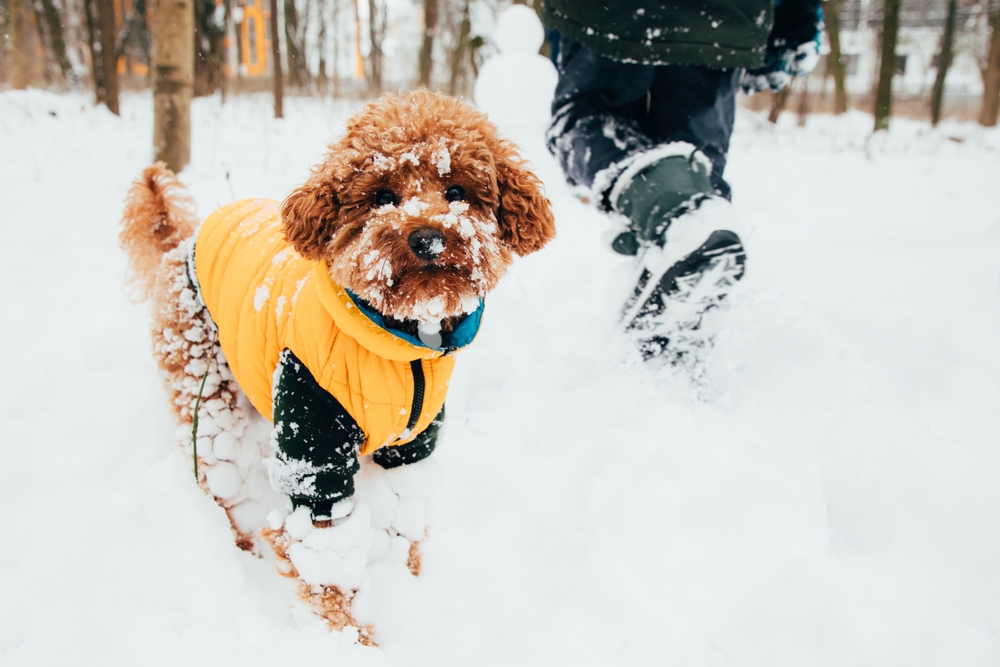Living in Michigan means that you have to get used to winter temperatures and learn how to safely exercise your dog in cold weather. This includes winter walks with your dog. If we let everything stop when the temperatures drop, we would never be able to do anything.
Dogs need exercise throughout the year, but especially during the winter. Physical activity helps keep them healthy and mentally stimulated, leading to a happier pup. Read on for tips to keeping them warm and safe during those frigid winter walks.
Find a Warm Coat
There are plenty of winter weather accessories that can help you keep your dogs warm on walks in cold temperatures. If you are regularly taking your dog for walks in the cold, it’s vital to invest in a warm coat that will help keep their heat close to their bodies. When finding a coat, it is important to remember:
- The coat should fit well and should not restrict movement or breathing
- Puffer coats and those with water-proof fabrics will provide the most warmth for your dogs
- Try a coat on your dog before use. Dog apparel does not have a uniform size, which means sizes can vary between brands.
Limit Time Outside
During the winter, it is much better to go for short walks. Limiting the time outside can prevent your dog from getting too cold and suffering from adverse side effects like hypothermia and frostbite. Instead of taking your dog out for a long, leisurely walk, ideally break it up into a few short walks throughout the day to keep them active. Remember, if the weather is too cold for you to stay outside for long periods of time comfortably, it’s too cold for your dog, too.
Protect Their Paws
The cold ground, snow, ice, and even melting salt can all lead to problems for your dog’s paws during a winter walk. Invest in paw-protecting booties that let your dog walk comfortably. Booties should:
- Fit well without being too tight. It’s essential that a dog can move easily, even when wearing booties (though it may take a little time to get used to them).
- Have traction for some of the more slippery sections of a walking path.
- Be designed for cold weather. These will offer the most protection for winter walks.
You should put the booties on your dog a few times before venturing outside with them to ensure they work well for your dog.
Keep Them Visible
Low visibility can present a danger for you and your dog on a winter walk. Make sure to keep them (and yourself) visible with bright colors, reflective items, and a light-up collar. If possible, stick to routes with good lighting (like street lamps or near commercial centers). Keep your dog close, and do not let him or her run off leash when you are near any kind of road.
Update Identification
It’s a good idea to ensure your dog’s identification is current before venturing on any winter walks. Be sure that your dog has a tag that gives his or her name and your contact information. A microchip is another accessory that can increase your chances of finding your pet in case you get separated, especially since your dog can become disoriented in snow. Your vet can painlessly place a microchip into your pet’s shoulder that contains your contact information.
How to safely exercise your dog during cold weather? Use common sense to bundle them up, keep them visible, and limit exposure. You’ll both be happier this long winter.
Westarbor Animal Hospital is here to help keep your pets healthy and happy throughout the year. From wellness exams to dental care and surgery, we are proud to offer the veterinary services you need. Call (734) 769-5391 to learn more or to schedule an appointment.


